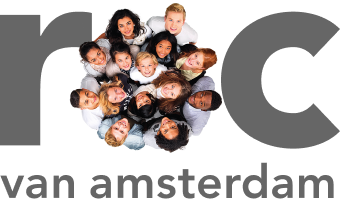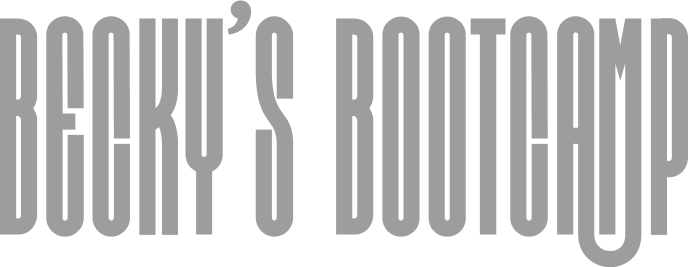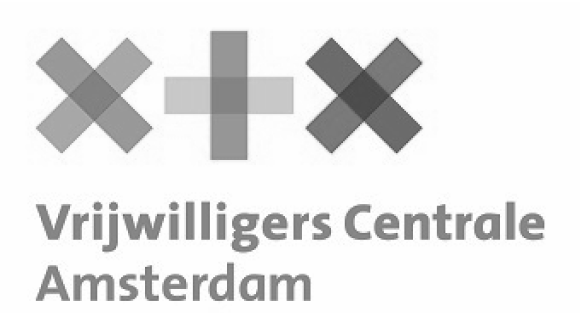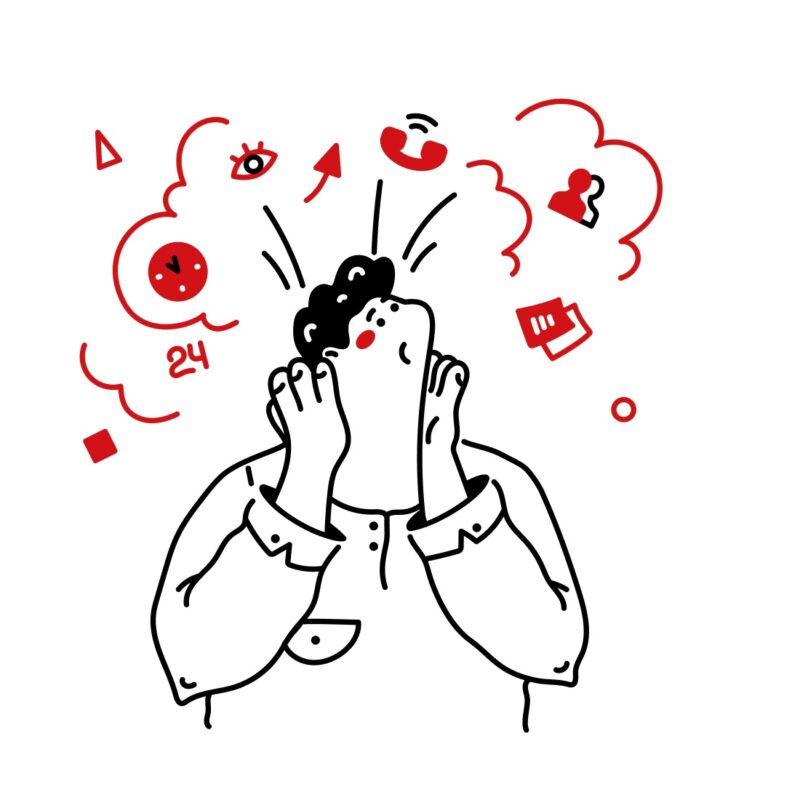User flow is the roadmap to smart interaction
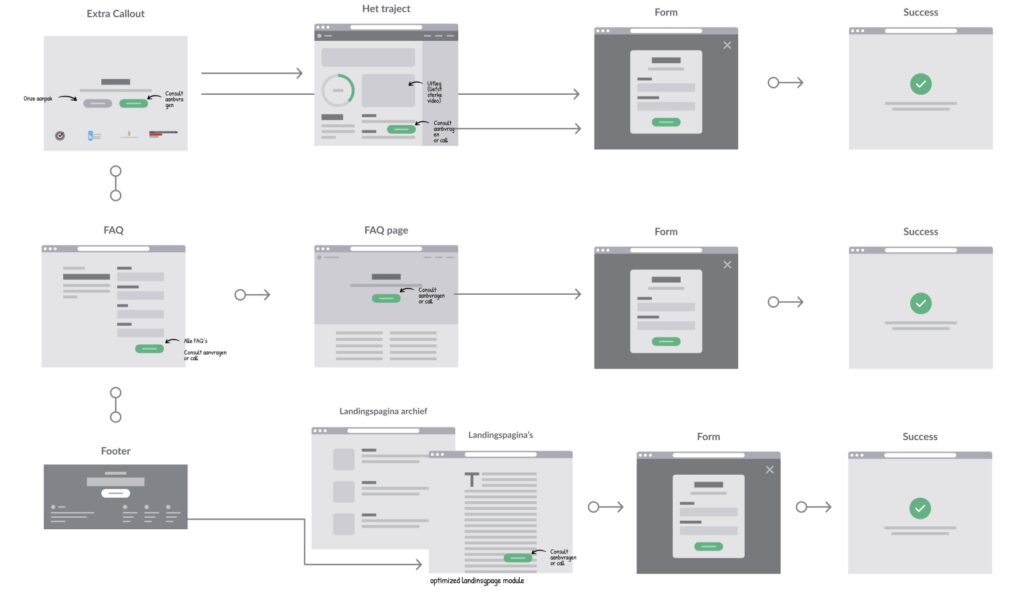
About user flows
A good user flow is the invisible structure that determines how a user moves through your digital product. A user flow is often represented in a diagram to provide insight into how users navigate through the product. It visualizes what steps someone takes from entry to conversion and shows how users navigate through different parts of a digital environment. Whether it’s a simple lead generator or a complex application – with a thoughtful user flow, you create an optimal structure for user experience and ensure that every click is logical and effective.
At Online Marketing Amsterdam, we often develop and design user flows as part of a broader UX design process, including wireframes, functional design, interfaces and navigational structure. Designing user flows is essential for creating effective interfaces. But in some cases, a full UX journey is not necessary. Instead, for smaller websites or campaign pages, we take a lean approach: a stand-alone user flow path that serves as the basis for UI design and technical realization. This way we think along with the scope, complexity and budget of our clients.
What to expect
- Vertical user flow based on briefing and input
- Joint review of structure and journeys
- Horizontal flow as a prelude to design & development
- Connection to wireframes, navigation and UI design
- Visually illustrated in clear diagrams
- Flexibly deployable: as a stand-alone or as a UX component
- Use of software to visualize and analyze user flows
- Applicable to various functions within digital products
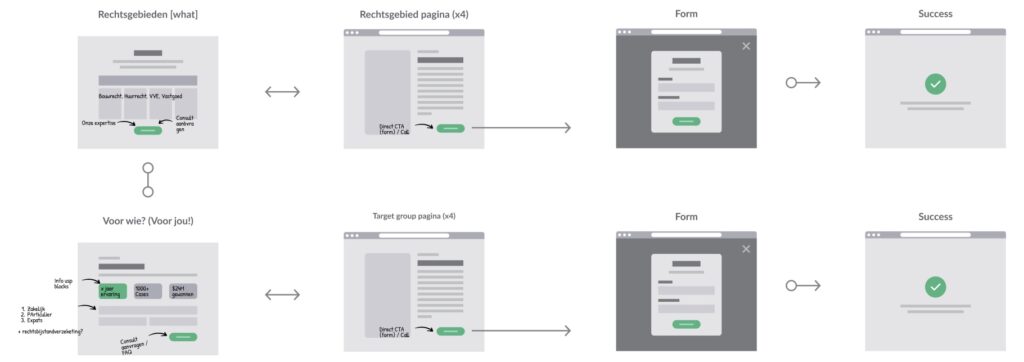
Examples of application:
- UX design processes for websites and platforms
- Preparation for wireframes and functional design
- Campaign pages and conversion-oriented microsites
- Lean preprocessing for UI design at lead generators
- Part of content strategy and prototyping
- Touchpoint mapping in customer journey development
- Optimization of the user experience on the homepage through user flows
Our working method
- Inventory & goals – What should the user be able to achieve? In this step, you determine the particular goal the user needs to achieve within the user flow.
- Vertical flow mapping – Linear outline schematic route. Here you map out the steps the user takes to reach the given goal.
- Review & fine-tuning – Validate together for completeness and logic. In this step, you test together whether all required actions are included in the flow.
- Horizontal flow – Visual elaboration per page or interaction moment. Per page or interaction moment you see what particular action the user performs.
- Input to design – Translation to wireframes and UI design. The goal is for the user to successfully complete the flow.



